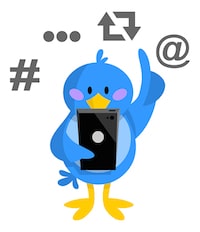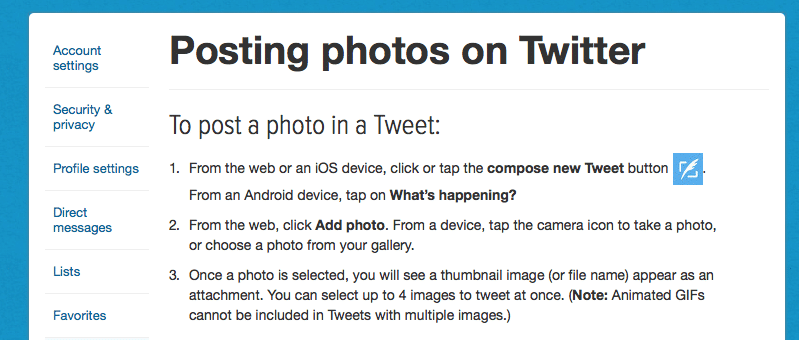Twitter Visuals Add Social Impact and Engagement
 Online marketing and healthcare content—most notably social media—is increasingly visual.
Online marketing and healthcare content—most notably social media—is increasingly visual.
Longer ago than most of us can remember, what we now call the Internet was strictly an alphanumeric beast. It was great, as long as you could communicate strictly in letters and numbers.
That didn’t last long. Communicating with visual elements—pictures, charts, animated GIFs and videos—are now the universal standard. So much so that the user/audience expects to see something besides text alone.
It wasn’t possible in the early days. But technology has enabled visuals online via high-speed connectivity, nearly ubiquitous Wi-Fi, as well as instant delivery to tablets and smart phones. (Plus, mobile devices put a camera in everyone’s pocket, with instant publishing connectivity to the Internet.)
Technology enables and delivers, but it is the human brain that drives the universal expectation of visual messages. Internet users expect to find, consume and share visual messages largely because our brain is hardwired to process visual messages 60,000 times faster than text alone.
Most of the “stuff” [not a neuro-medical term] that is transmitted to our brain is visual, and about half of your brain is active while the brain processes visual stuff. What’s more, the brain often calls up its own images to help us understand a text only message.
Why Visuals, and a Quick “Twitter How-To”
YouTube, Pinterest, Facebook, Instagram and many other social media tools (such as Infographics) are image-centric. But it was only a year ago this month that Twitter, the leading micro-blog platform, enabled images to be attached to Tweets. Adding visuals to your content influences human emotions, actions and responses:
- Grabs attention. Visuals get noticed among the torrent of Tweets;
- Faster recognition. That’s 60,000 times faster than mentally decoding text;
- More memorable. Images also reinforce text message or idea;
- Greater engagement. Compelling visual content generates more views;
- More re-tweets. Tweets with image are 94 percent more likely to be re-tweeted. [Dan Zarella]
- More clicks. Tweets with images received 18 percent more clicks than those without. [Buffer]
Adding an image (photo, GIF or JPEG) to your next Tweet is nearly a one-click process. From the Twitter Help Center:

The Twitter Help Center advises that photos can be up to 5MB; animated GIFs can be up to 3MB. GIF, JPEG and PNG files are accepted, but not BMP or TIFF files.
For RELATED READING, see our previous posts titled, Picture This: Using the Explosive Trend to Visuals in Social Media, Twitter Collage: A Zillion Volts of Notice-ability, and Twitter Cheat Sheet: Microblog Quick Guide for Marketing.
Kathy Gaughran








